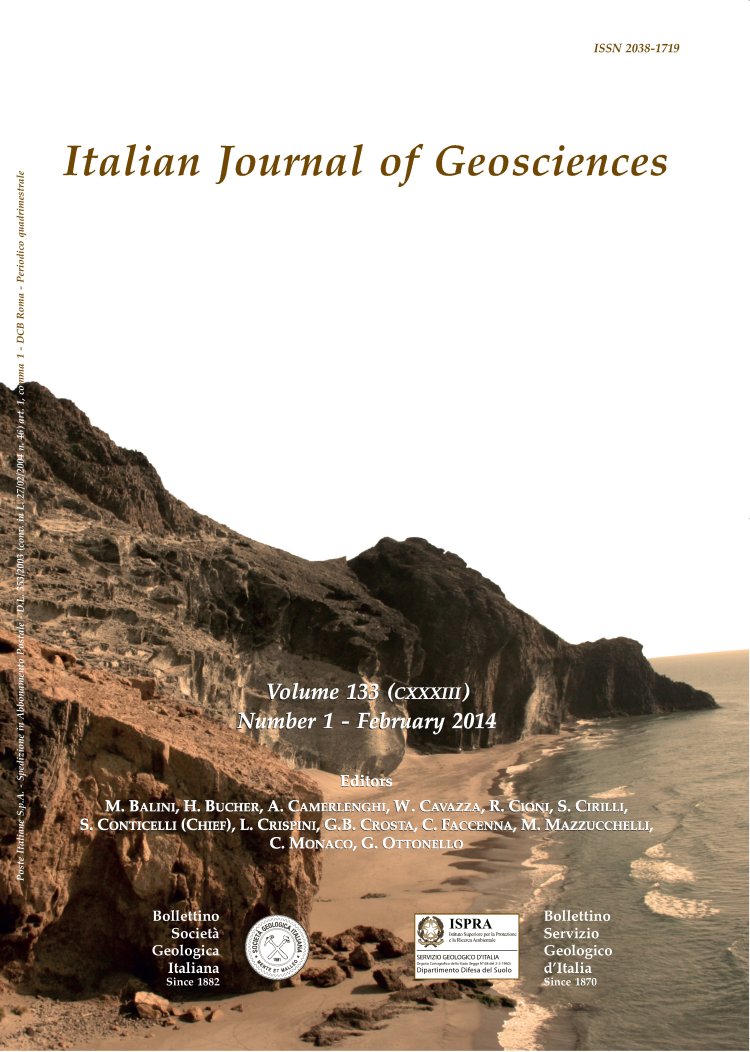
Tertiary volcanism in the Italian Alps (Giudicarie fault zone, NE Italy): insight for double alpine magmatic arc
Silvana Martin(*) & Patrizia Macera(**)
(*) Dipartimento di Geoscienze, University of Padua, via G. Gradenigo, 6 - Padova, Italy.
(**) Dipartimento di Scienze della Terra, Universita di Pisa, via S. Maria, 53 - Pisa, Italy. Phone number: +39-0502215792; fax number: +39-0502215800; e-mail: macera@dst.unipi.it
Volume: 133 (2014) f.1
Pages: 63-84
Abstract
In the Southern Alps (NE Italy), within the Giudicarie fault zone, Middle to Upper Eocene deep-water foredeep succession includes volcanic layers, pebbles from porphyric dykes and volcaniclastic sandstones, testifying the occurrence of Eocene volcanic activity from unknown volcanic centres. In this paper, we report petrographic, geochemical and chronostratigraphic characteristics.
Both the volcanic layers and the pebbles share their petrographic and geochemical characteristics with calc-alkaline igneous activity of the nearby Eocene Adamello batholith, as well as with dykes from the Eastern Lombardian Alps and the Southern Alps basement, in the proximity of the Giudicarie fault zone. All of these rocks have incompatible element ratios typical of orogenic magmas (e.g., high Th/Yb and La/Nb, and low Ta/Yb, Nb/U) in contrast to that observed for the coeval anorogenic Veneto volcanic rocks. In addition, the studied Eocene calc-alkaline rocks also differ in part from the Oligocene calc-alkaline ones distributed along the E-W oriented Periadriatic fault system in terms of trace element distribution and incompatible element ratios. The Oligocene rocks are generally more enriched in incompatible elements than the Eocene ones and show higher Zr/Y but lower Nb/Y ratios. The set of data presented in this paper allows us to advance new insights on the evolution of Tertiary magmatism in the Alps, which was probably developed through a NE-SW-oriented magmatic arc during Eocene and an E-W-oriented magmatic arc during Oligocene. The two events are marked by different geochemical features of the magmatic products.
Keywords
Get Full Text